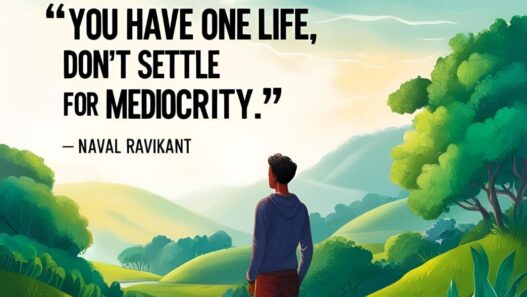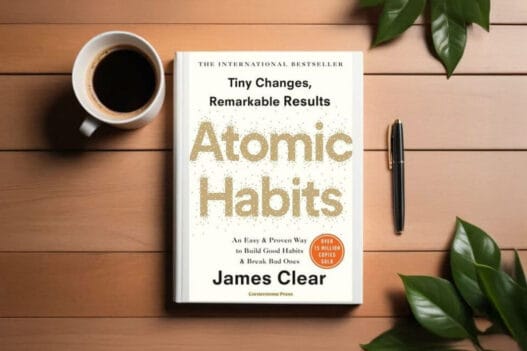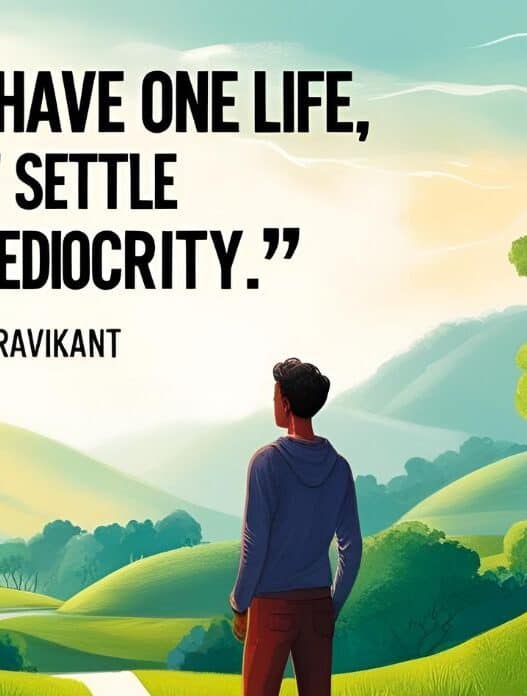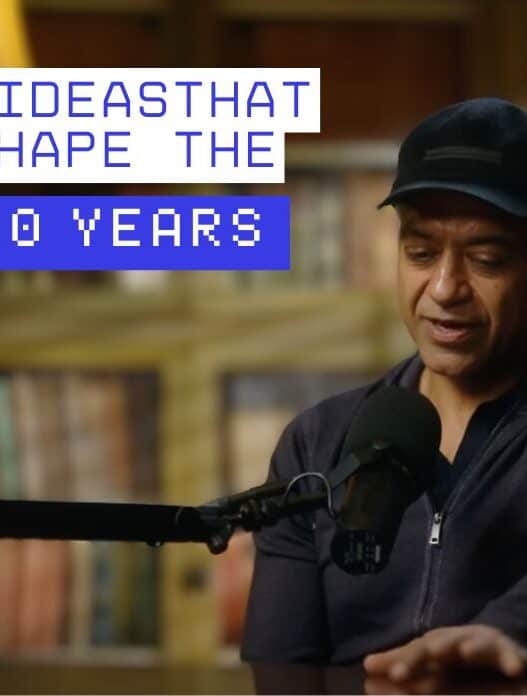Table of contents
📘 Summary of Atomic Habits by James Clear
Tiny Changes, Remarkable Results
James Clear’s Atomic Habits is a deep dive into the science and art of behavior change, built around one simple premise: small, consistent improvements compound into remarkable outcomes over time. Rather than focusing on dramatic overhauls, Clear champions a systems-based approach that emphasizes identity, environment, and incremental progress. Drawing on neuroscience, psychology, and real-world examples, the book offers a practical framework for reshaping habits—both breaking bad ones and building good ones.
🧠 Main Themes
1. The Compound Power of Small Habits
“Success is the product of daily habits—not once-in-a-lifetime transformations.”
Small actions performed consistently have the power to compound over time, like interest in a bank account. A 1% improvement every day leads to being 37 times better over a year.
2. Identity-Based Habits
“Every action you take is a vote for the type of person you wish to become.”
Clear urges readers to shift from outcome-based goals (e.g., “lose weight”) to identity-based habits (“I am a healthy person”). True change, he argues, happens when habits are aligned with who we believe we are.
3. Systems Over Goals
“You do not rise to the level of your goals. You fall to the level of your systems.”
Goals are good for direction, but systems—daily habits, routines, and environments—are what drive lasting change. Focusing on building better systems means your outcomes take care of themselves.
4. The Four Laws of Behavior Change
Clear introduces a powerful model for habit formation:
- Cue – Make it obvious
- Craving – Make it attractive
- Response – Make it easy
- Reward – Make it satisfying
Break any of these, and the habit fails to form or stick.
🔍 Key Takeaways
- Awareness is the First Step “You need to be aware of your habits before you can change them.” Try the “Pointing-and-Calling” technique and habit rating system (+, –, =) to bring subconscious habits into focus.
- Environment Drives Behavior “Visual cues are the greatest catalyst of our behavior.” Shape your surroundings to encourage desired habits and reduce cues for negative ones.
- Stack and Anchor New Habits “After [current habit], I will [new habit].” Habit stacking leverages existing routines to create new ones seamlessly.
- Don’t Chase Perfection, Aim for Consistency “You don’t need to be perfect. You just need to win the majority of the time.”
Missing a day isn’t failure. The rule is: never miss twice. - Use the Two-Minute Rule “When you start a new habit, it should take less than two minutes to do.” Scaling down new behaviors makes them easier to start and sustain.
- Emotion and Progress Drive Habit Stickiness “One of the most satisfying feelings is the feeling of making progress.” Use habit trackers and visual cues to feel that progress and stay motivated.
- Design Commitment Devices “A choice you make in the present that controls your actions in the future.” Set up systems now that help you stay disciplined later.
✨ Memorable Quotes
- “Breakthrough moments are often the result of many previous actions.”
- “The most powerful outcomes are delayed.”
- “The greatest threat to success is not failure but boredom.”
- “The best is the enemy of good.” — Voltaire (quoted in the book)
- “Your actions reveal your true motivations.”
🧩 Author’s Perspective & Approach
James Clear blends behavioral psychology with clear, actionable insights. His writing is accessible, anecdote-rich, and grounded in science without being dry. He doesn’t prescribe rigid routines but offers frameworks adaptable to any lifestyle or goal. His emphasis on identity, consistency, and environment design sets Atomic Habits apart from traditional self-help books focused purely on motivation or willpower.
📝 Short Review
Atomic Habits is both a manual and a mindset shift. It’s easy to digest but rich with “aha” moments, making it a go-to for anyone looking to build sustainable habits. Whether you’re trying to exercise more, procrastinate less, or just understand how behavior works, Clear offers tools that feel doable and motivating. His metaphors—like the plane drifting slightly off-course or the bamboo sprouting after years underground—are sticky and illustrative.
📚 Full Highlight Collection
A curated list of key quotes and notes from Atomic Habits by James Clear
🏗 The Fundamentals of Habit Change
- “Success is the product of daily habits—not once-in-a-lifetime transformations.”
- “If you can get one percent better each day for one year, you’ll end up thirty-seven times better by the time you’re done.”
→ Note: Tiny improvements compound. Conversely, decline also compounds. - “The impact of a habit is like shifting a plane’s route by 3.5 degrees—you’ll land in a different city entirely.”
- “Breakthrough moments are often the result of many previous actions.”
→ Note: Habits may seem ineffective until a tipping point is reached. - “When nothing seems to help, I go and look at a stonecutter hammering away at his rock, perhaps a hundred times without as much as a crack showing in it. Yet at the hundred and first blow it will split in two, and I know it was not that blow that did it—but all that had gone before.”
→ Note: Persistence leads to breakthroughs—this is the plateau of latent potential.
🎯 Goals vs. Systems vs. Identity
- “Goals are about the results you want. Systems are about the processes that lead to those results.”
- “We fail because we try to change the wrong thing or change in the wrong way.”
- Three layers of behavior change:
- Outcomes – what you get
- Processes – what you do
- Identity – what you believe
- “Every action is a vote for the type of person you want to become.”
→ Note: You don’t need to be perfect—just win the majority of votes.
🔄 The Habit Loop: Cue → Craving → Response → Reward
- “A habit is behavior repeated enough to become automatic.”
- “All habits follow a 4-step pattern: cue, craving, response, reward.”
- “Eliminate the cue, and the habit won’t start. Remove the craving, and motivation drops…”
🔍 Awareness, Intention & Habit Tracking
- “You need to be aware of your habits before you can change them.”
- “Pointing-and-Calling raises awareness from subconscious to conscious.”
→ Note: Try listing daily habits and labeling them: (+) Good, (–) Bad, (=) Neutral. - “Vague dreams lead to rationalizing. Specific time & place makes habits stick.”
- “Habit tracking provides clear feedback and reinforces identity.”
→ Note: Never miss twice—slipping once is okay, bouncing back is essential.
⚙️ Habit Building Techniques
- “Habit stacking: After [current habit], I will [new habit].”
→ Example: After taking off work shoes, change into workout clothes. - “Make it obvious, make it attractive, make it easy, make it satisfying.” (The Four Laws)
- “Use the Two-Minute Rule: any new habit should take under two minutes to start.”
- “The Law of Least Effort: we default to what’s convenient.”
→ Note: Optimize your environment to favor good habits. - “Cut bad habits off at the source—eliminate the cue.”
- “Commitment devices are present-day decisions that lock in future behavior.”
🧠 The Psychology Behind Habits
- “Dopamine spikes not just from pleasure, but from anticipation.”
→ Note: We’re wired more to want than to like. - “The Diderot Effect: one purchase can trigger a chain of related buying decisions.”
- “We evolved to favor instant rewards—long-term gains feel less motivating.”
- “Bad habits offer immediate reward, delayed consequences.”
👥 Social Influence & Identity
- “Solomon Asch’s conformity experiment: people often trust the group over their own eyes.”
- “We look to the group when we’re unsure, but once we fit in, we want to stand out.”
- “‘I’m not confined to my wheelchair—I’m liberated by it.’”
→ Note: Reframing perspective transforms experience. - “Tie your identity to values, not roles. ‘I’m a CEO’ becomes ‘I’m someone who builds.’”
💡 Motivation, Boredom, and Mastery
- “The Goldilocks Rule: peak motivation comes from tasks that are neither too easy nor too hard.”
- “The greatest threat to success is not failure—but boredom.”
- “Only working when you feel motivated means you’ll never be consistent.”
🛠 Final Reflections
- “The secret to getting results that last is to never stop improving.”
- “Small habits don’t add up. They compound.”
- “He who has a why to live for can bear almost any how.” – Nietzsche
- “Your actions reveal your priorities.”
- “Being poor is not having too little. It’s wanting more.”
→ Note: If your wants exceed your likes, you’ll always feel unsatisfied.
Would you like this as a printable PDF, or formatted for Notion or Obsidian? I can generate a version that suits your setup.
🎯 Who Should Read This Book?
This book is ideal for:
- Self-improvement enthusiasts looking for a grounded, no-fluff approach
- Professionals aiming to boost productivity or consistency
- Students and creatives battling procrastination or burnout
- Anyone stuck in a cycle of failed resolutions who needs a smarter, gentler system for change
If you’re someone who’s ever thought, “I know what to do, I just can’t seem to do it,” this book was written for you.






















Your post is a true masterpiece. I\’ll be referencing it in my own work.
I\’m honored to hear that. I\’m always striving to provide the best information possible.
This post is a game-changer. I\’ve learned so much from it – thank you!
Your post is a true masterpiece. I\’ll be referencing it in my own work.
I\’m so glad I found your site. Your posts are consistently excellent.